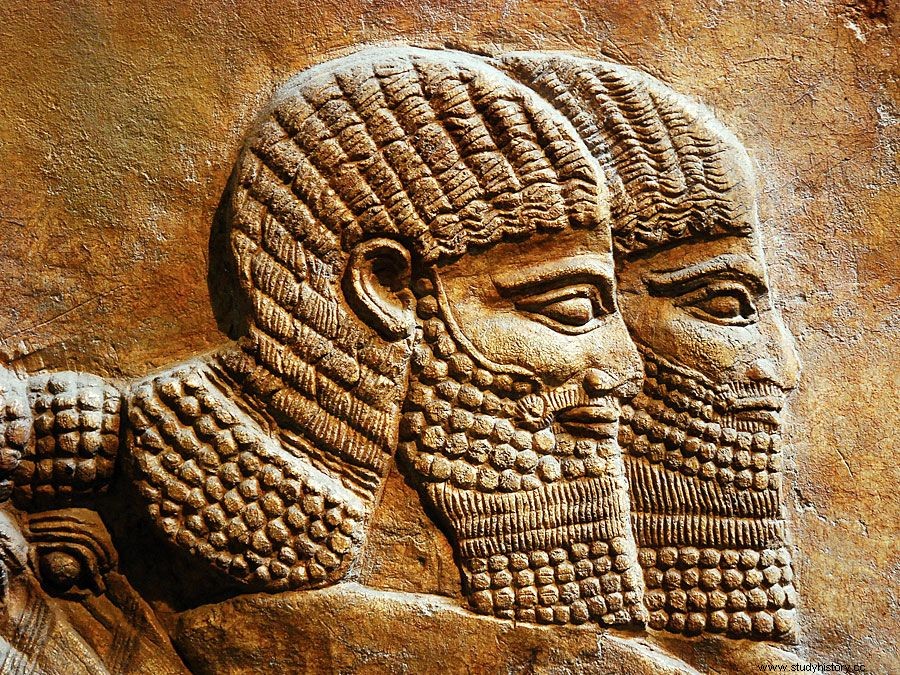Al-Jazīrah (Arabic:"island"), the northern part of Mesopotamia, which is now part of the Northern Iraq is and extending into the Eastern Turkey and to the extreme northeast Syria extends . The region lies between the Euphrates and Tigris rivers and is bounded on the south by a line between Takrit and Anbar. It consists of a hilly and irregular plateau rising 240 to 460 m above sea level .
 Britannica Quiz The Middle East:Fact or Fiction? Is the literacy rate very high in Afghanistan? Does Yemen take its name from the Arabic word "northern"? Sort the facts in this quiz about Syria, Iraq and other Middle Eastern countries.
Britannica Quiz The Middle East:Fact or Fiction? Is the literacy rate very high in Afghanistan? Does Yemen take its name from the Arabic word "northern"? Sort the facts in this quiz about Syria, Iraq and other Middle Eastern countries. Al-Jazīrah was ancient and Medieval as a node between Iraq, Anatolia, Syria, Armenia and Iran important . It was also valued for its agricultural products. There was as early as the beginning of the Christian era, when Al-Jazīrah was between the Byzantines numerous towns and markets along both rivers and Persian empires. During the Umayyad and ʿAbbāsid periods, Al-Jazirah was a center of conflict and insurgency, and groups such as the Shiʿa and Khāriji fought against the authorities in Damascus or Baghdad from the region . It even achieved semi-autonomy at the end of the 9th century, but was reconquered by the ʿAbbāsids in 892. In the 10th century, Al-Jazīrah came under the rule of a number of independent dynasties:the Ḥamdānids of Mosul (905–991); the Buyids of Baghdad (977–983); the Marwānids in Diyār Bakr (983–1085); and the ʿUqaylids in Mosul ( approx. 992–1096). After a brief period as part of the Seljuk Empire (1085–92), the region's various districts pursued separate existences.
History of the largest district, Diyār Rabīʿah in the east of Al-Jazirah became identical with that of its capital Mosul from then on. The Zangids, the Mamlūks, the Persian Il-Khans, the Jalāyirids, the Turkmen Kara Koyunlu and Ak Koyunlu and the Persian Ṣafavids successively ruled the area until it 1637 finally into the Ottoman Empire was included. With the dissolution of the empire in 1918, Diyār Rabīʿah was divided between Syria and Iraq.
Diyār Muḍar, a western frontier region, was briefly divided into two kingdoms in the late 11th century:the Crusader Armenian state in Edessa (now Şanlıurfa, Turkey) to the north and the Turkish Muslim Kingdom at Harran to the south. Zangi's capture of Edessa in 1144 brought Diyār Muḍar back under Muslim control. In the 15th century, Turkmen tribes increasingly invaded Diyār Muḍar, and the Ak Koyunlu finally took it around 1402. The district became part of the Ottoman Empire in the early 17th century and is divided between Turkey and Syria since 1918.
The chaotic state of the Seljuk Empire in 1092 provided opportunities for several Turkmen tribes to settle Diyār Bakr, the northernmost district. Diyār Bakr came under Ottoman rule in 1516 and its capital Āmida (modern Diyarbakır, Turkey) flourished as a literary and scientific center. After the collapse of the Ottoman Empire, the northern district became part of Turkey.
